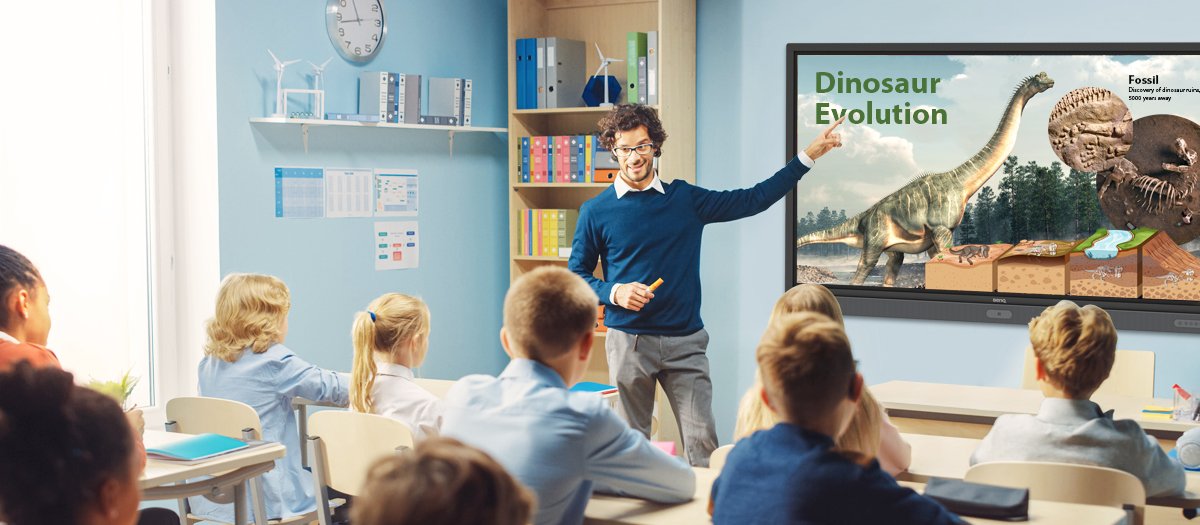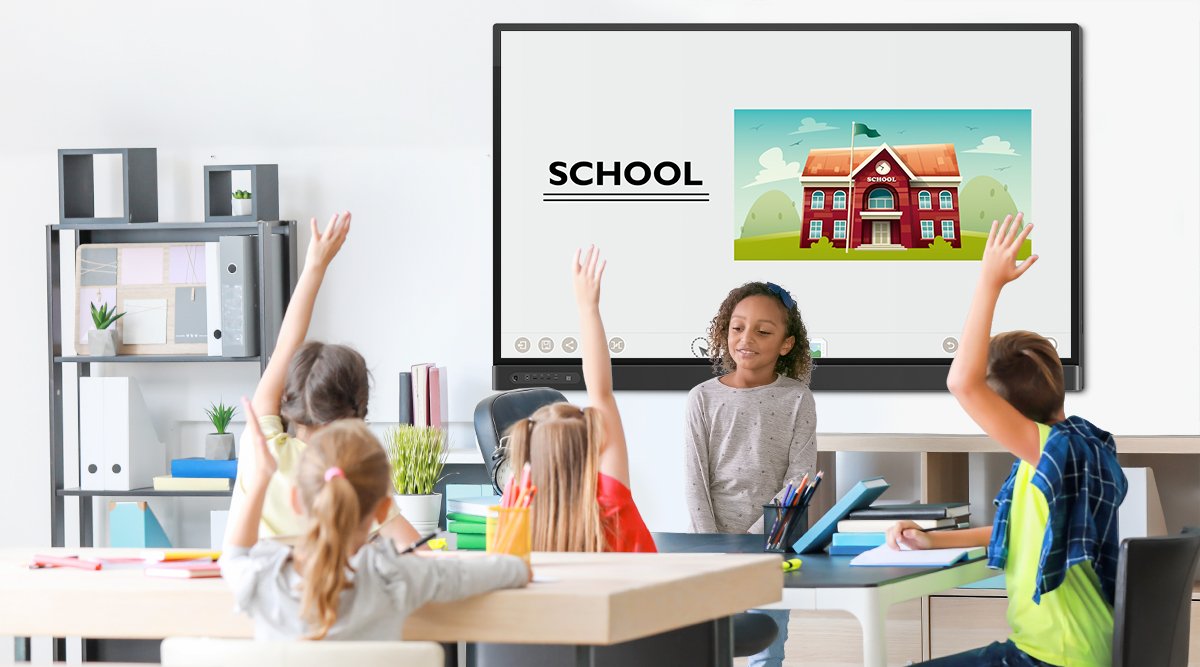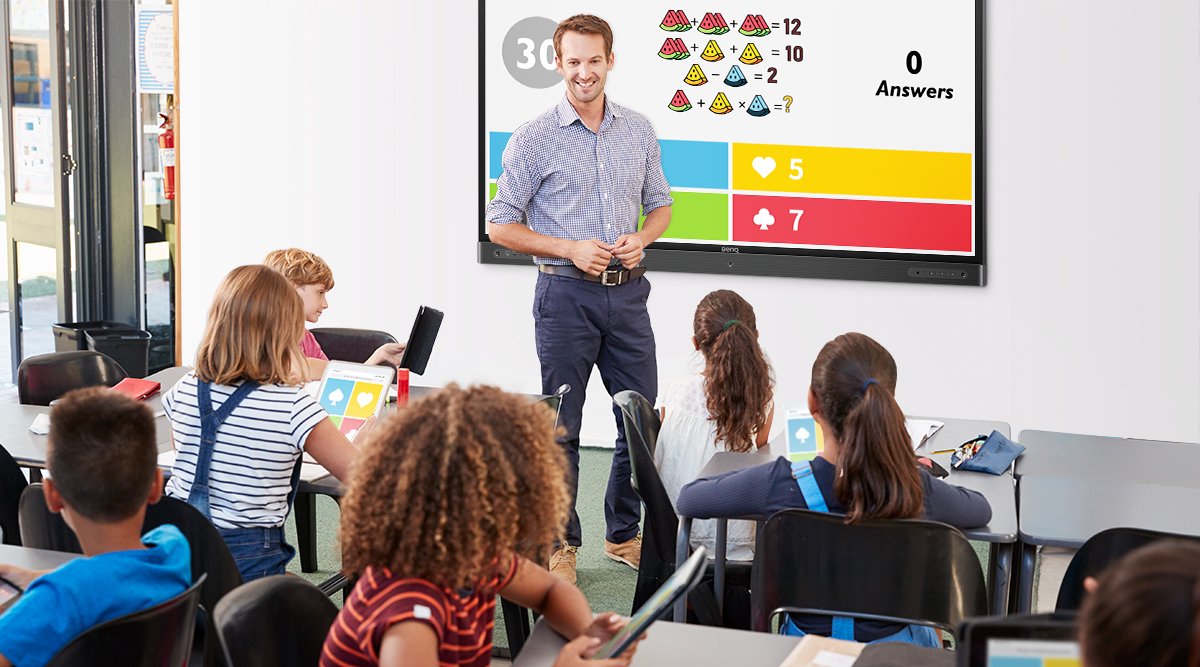Smart classrooms, digital classrooms, digitally-aided education, innovative teaching. Many names exist for the big changes and stages of educational evolution that are taking place in schools all over the world. Adapting to new technology and a different set of circumstances, teachers and students now turn to educational technology more than ever to empower flexible, responsive, and adaptable classroom engagements.
The smart classroom represents an international trend in learning, and the most effective single-purchase piece of technology schools can add to their roster is the interactive whiteboards.
Self-contained but eminently interconnected with other devices, the interactive whiteboards offers a consolidated central platform for smart classrooms. Interactive whiteboards deliver an instant upgrade because not only are they all-in-one, they’re also very easy to use and immediately familiar to teachers and students. There’s little to no need for IT support, and that’s a big win for tech procurement. After all, lengthy training and extensive specialization very quickly offset the benefits of even the best technology. Interactive displays are ready to go out of the box, and it’s pretty much guaranteed users will get the most out of them in the near term and without a long period of adjustment.
Shaping Smart Classrooms with Advanced Tech
Even with simple to use and intuitive tools, usage over time leads to increased proficiency. And while interactive whiteboards can be used in many ways, they pack a lot of features and thus the more of those features are used, the greater the benefit. And also, the better the return on investment.
Shaping Smart Classroom Stage 1
Digitally-Assisted Teaching
The most primary and basic phase for shaping a smart classroom, when educational technology is perhaps still new to stakeholders. Tech is used mostly in a one-way fashion, meaning teachers communicate materials to student in a very traditional manner, with little feedback from students. Materials are prepared before class, and technology is used as platform of delivery and presentation. While students may enjoy the audio-visual and multimedia nature of content delivery, this stage is overall quite passive. Educators engage in lectures, explanations, narration, and other similar teaching modes.
Interactive Whiteboard, or Smart board for teaching as they’re also known, offer an excellent element of smart classroom at this stage. Thanks to their flexibility and ease of use, interactive whiteboards can be used simply or intricately based on educator choice and preference. The ability to directly mirror content from a teacher’s laptop, tablet, or phone onto an interactive whiteboard enables the effective sharing of virtually all types of content, from videos to PowerPoint presentations.
While perfectly legitimate, this first stage doesn’t do justice to the wealth of benefits interactive whiteboards bring to bear. More importantly, it doesn’t do justice to your teachers and students, and so we recommend you encourage everyone to become more involved and move onward.


Shaping Smart Classroom Stage 2
Interactive Teaching
Taking things further, educational technology becomes important to multilateral discourse among teachers and students. This stage for shaping smart classroom arises when users become more familiar with technology over time, or are proficient and comfortable with said technology from the get-go. Since interactive interactive whiteboards are so easy to use, it’s quite possible in your case users will enter this stage very quickly.
With interactive teaching, educators deliver class materials and activities to all participating learners at the same time and with the same level of fidelity. In addition to being efficient, this trait helps minimize extant “digital divides” that would otherwise impede classroom success. The instant delivery offered by interactive interactive makes class sessions dynamic and productive, with no delays or awkward pauses as teachers or students struggle with a mess of different tools. The all-in-one design of interactvie whiteboards precludes such a situation.
As this stage is two-way by nature, often called interactive phase of teaching, there’s a lot of interaction and back and forth between teachers and students. Team activities, gamification of learning, Q&A sessions, open discussions and other similar modes of teaching are prevalent in this stage. Students have ample opportunity to receive and provide feedback, plus a plethora of ways to practice presentation skills. Group learning and brainstorming bolster the interactive nature of learning here, all aided by interactive whiteboards.
Thanks to an abundance of Android apps right on the interactive whiteboard or mirrored from an external device, classes take on entirely new dimensions compared to basic digitally-aided teaching. Features like multi-touch and split screen encourage learners to come up to the interactive whiteboard and interact with class materials directly, particularly when working with gamified platforms like Kahoot!


Shaping Smart Classroom Stage 3
Innovative Teaching in Smart Classrooms
When educational technology like interactive whiteboards truly becomes part of the landscape for teachers and students, the class takes on fully smart attributes not possible without the implementation of new technology.
The embrace here is so complete, acquired technology proves useful for expanding the scope of learning in eclectic ways. This means more than just blended learning that includes students located beyond the classroom. Imagine the ability to hold extra-curricular activities such as virtual museum tours and presentations by guest speakers, all via the cloud and right on the interactive whiteboards.


Because this stage offers so many opportunities to enrich the lives of students, proficiency levels among educators and learners are very high, and so the technology becomes second nature. Stakeholders take it upon themselves to explore new topics and try new things with the tools available to them, again with a big emphasis on live content and the cloud.
When teachers and students feel so comfortable with tech that spontaneous practice and experimentation occur, you know learning is in a good place. This stage is the most conducive to open communication, discussions, and knowledge sharing, so we recommend you aspire to bring all your stakeholders to this level.
Because technology is so enmeshed in learning, diverse teaching styles emerge. No longer constrained by one-way communication, genuine multi-party, multi-directional engagement occurs. Cooperative learning is at its peak, and modalities tend to be of the flipped classroom variety. That is, students explore topics and complete tasks before the class, then discuss what they learned with educators to reach conclusions and share knowledge.
This is inquiry-based learning, where students are encouraged to ask questions and find their own path through queries while figuring out how to solve problems. Interactive whiteboard form a solid foundation during this stage, thanks to integrating cloud access, video conferencing, and apps that enable curiosity-prioritizing education.
On BenQ ClassroomCare® interactive whiteboards, students and teachers benefit from the inclusion of EZWrite and InstaShare apps. These enable collaboration and sharing with ease, whether in the classroom or remotely.
Summary of All Three Stages of Smart Classrooms
Prepare to the truly smart classroom
Interactive whiteboards have massive potential to revolutionize classrooms with the help of advanced digital tools. However, you need to make sure your school is prepared. To maximize the benefit gained from interactive whiteboards acquisition, you want to be at stage three, with truly smart classrooms.
While preparing for this isn’t difficult, it should also not be taken for granted. Schools need to have good connectivity and the infrastructure that consistent cloud access needs. Curricula should also be adjusted, as purely traditional, textbook-based one-way teaching has little to gain from the addition of interactive whiteboards. But it’s also likely to hold your learners back.



